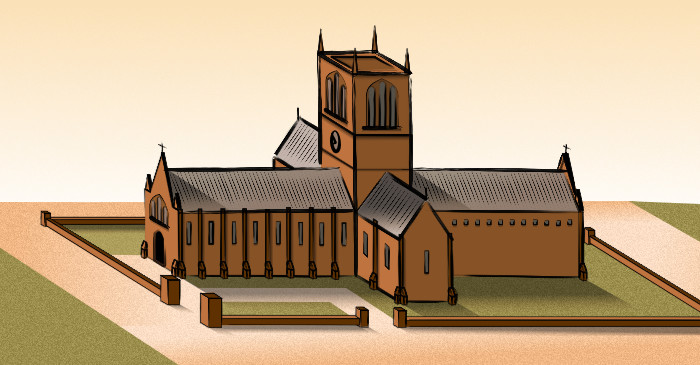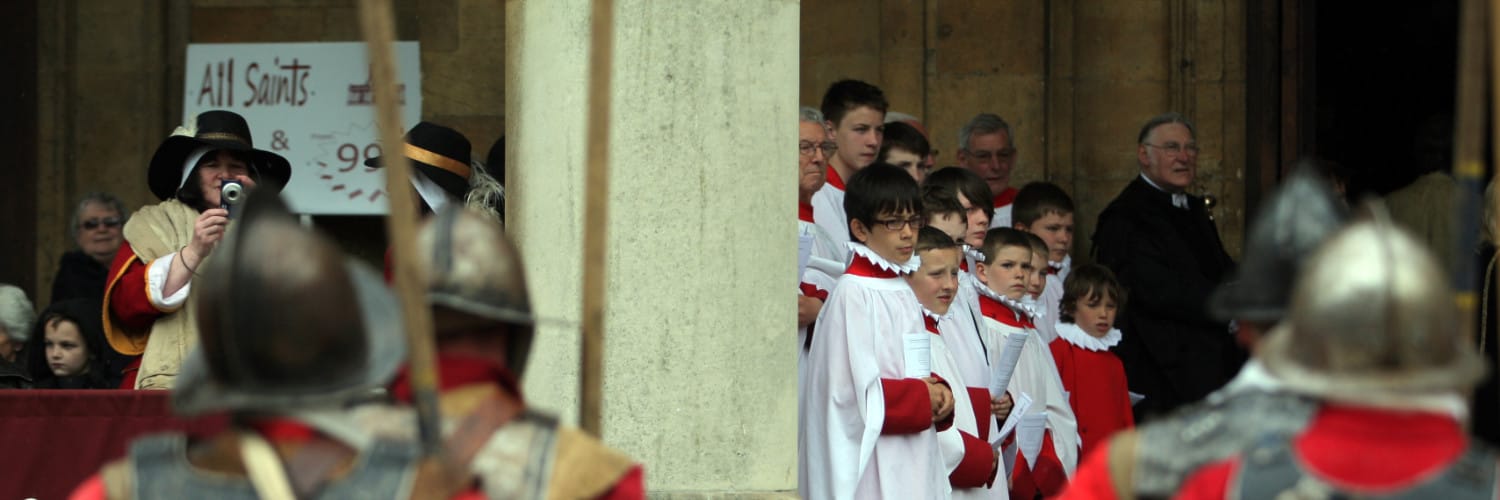Home / Heritage
/ All Hallows' Church

An early depiction of All Hallows' Church

A sketch of what Alhallowes church might have looked like in medieval times
All Hallows' Church
The original church, written Alhallowes in old English, was devastated in the Great Fire of Northampton in 1675. Little is known about the original structure and what survived.
Illustrations that provide an insight into the external appearance of the original church are scarce. Additionally, the depictions that are available present an
inconsistent and confusing narrative, leaving historians with a puzzle to unravel regarding its actual architectural features. In order to gain a better understanding,
historians also use various textual descriptions that offer fragments of detail and provide a somewhat fragmented impression of the building's overall appearance.
One of the earliest depictions of the church can be found in John Speede's map of the town created in 1610. While this representation provides valuable insight into All Hallows'
original footprint, it's important to note that it doesn't capture any precise details or a complete image of the church as it stood at the time. By studying available sources,
it enables historians to envisage its lost splendor and appreciate the magnitude of its reconstruction.
What we are able to piece together is that All Hallows' Church probably showcased a captivating blend of architectural styles, representing the modifications made over the centuries.
The church embraced a cruciform plan, with a central tower anchoring its design. Its layout encompassed a nave, chancel, transepts, and an apsidal east end. Notably, the tower
displayed a square base, possibly rising to what is believed to be an octagonal lantern tower - an iconic characteristic of Norman architecture. The west end of the church extended
all the way to the top of Gold Street.
Although the original structure has been forever lost, the quest to understand its appearance and significance serves as a tribute to the enduring legacy of this
remarkable place of worship. It will remain an indelible part of Northampton's history and will serve as a poignant reminder of the vibrant religious and cultural legacy that predates
the devastating fire. As historians explore Northampton's rich tapestry of history, the memory of All Hallows' Church continues to evoke awe and reverence, paying homage to the
town's spiritual roots.
Signup to our Newsletter
We'd love to share with you our e-newsletter, and keep you informed of what's going on in the church and community. If you'd like us to do that, and give your consent for us to
contact you, click the button below and complete the signup form.
Subscribe to our Newsletter
Cookie Notice
Our website uses cookies to bring you the best most relevant and engaging experience. You will need to accept cookies on our website to take advantage of all the features our website offers.
By consenting to the use of cookies on your device you agree to our
Cookie Policy.
Consent to Cookies


















